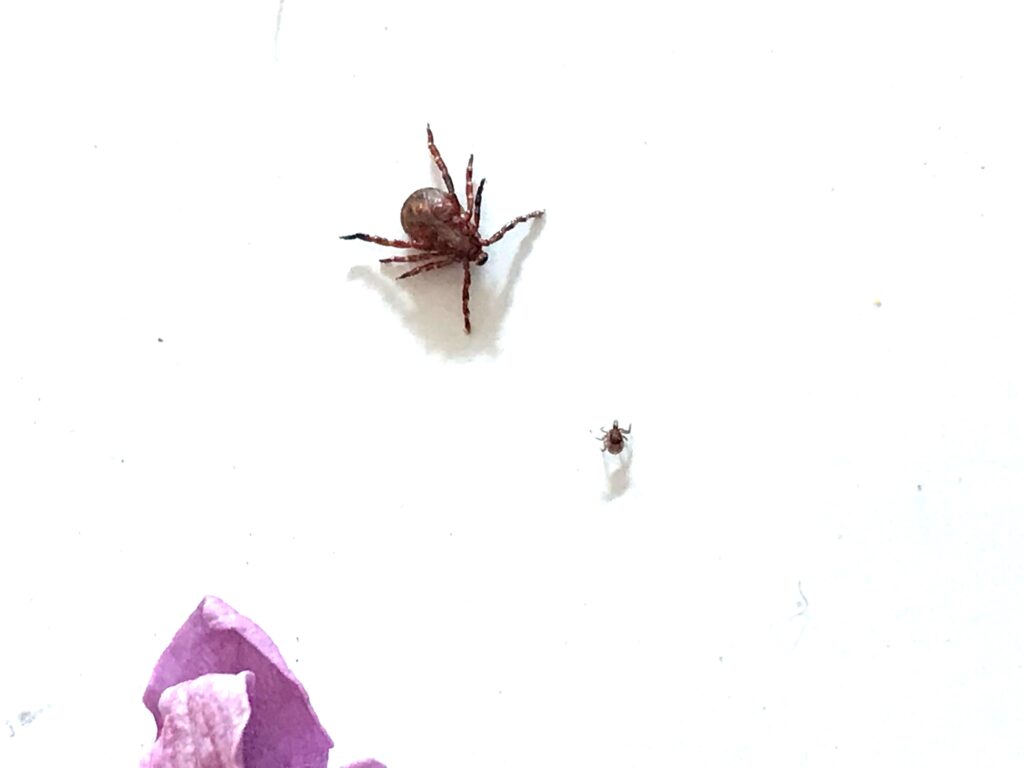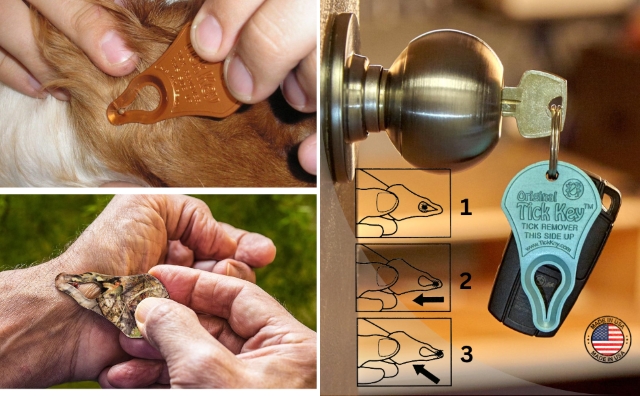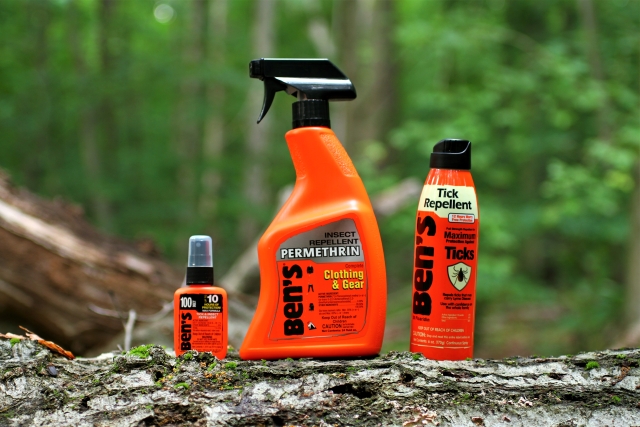Minuscule vampires of the forest, ticks are tiny, eight-legged arachnids. These vampires cling to the skin of humans and animals to feed on their blood. They thrive in grassy, wooded areas and fields where they can easily attach themselves to a passing host. Ticks are known to transmit several diseases, including Lyme disease, which may be the worst!
Three Minuscule Vampires
Rocky Mountain spotted fever is a tick-borne illness caused by the bacterium Rickettsia rickettsii. Symptoms appear within two weeks of a tick bite and can include fever, headache, muscle pain, and a spreading rash. If you ignore it, it can lead to serious health issues like organ damage and even be fatal. It’s important to take steps to avoid ticks. Remove any ticks promptly, and see a doctor if you notice symptoms.

Advertisement — Continue Reading Below
Anaplasmosis is another tick-related disease that can be serious if untreated. Symptoms often feel like the flu—fever, chills, headache, muscle pain, and fatigue. In severe cases, it can lead to dangerous complications like respiratory or kidney failure. So, if you think you’ve been bitten and feel unwell, especially if you’re older or have health issues, get medical help right away. Most people recover fully with prompt treatment.
Then there’s Lyme disease, a bacterial infection spread by bites from these minuscule vampires of the forest. Its symptoms can vary widely, often starting with flu-like feelings, fatigue, and a distinctive bullseye rash. If untreated, it can affect your joints, heart, and nervous system, leading to more severe issues, like arthritis or even facial paralysis.
Rarely, it can cause long-term neurological problems, affecting memory and concentration. So, again, take precautions against ticks, remove them quickly, and seek medical attention if you experience any symptoms. The earlier you get diagnosed and treated, the better your chances of avoiding complications.
Advertisement — Continue Reading Below
Identifying Vampires of the Forest
In North America, you’ll come across several tick species, but only a handful are usually a concern for people. It’s good to be familiar with the main types: black-legged ticks, which include the deer tick and Western black-legged tick; dog ticks, such as the American dog tick and brown dog tick; and the lone star tick.
You can tell them apart by their size, color, shape, and where they’re found. For instance, the black-legged tick has black legs and a dark brown body, while the lone star tick stands out with a distinct white spot on its back.

Advertisement — Continue Reading Below
To identify a tick, grab a magnifying glass and check its features against a trustworthy tick identification guide. If you can, store the tick in a sealed container using clear tape or a damp paper towel for later testing or confirmation.
Deterrence of Ticks
To dodge tick bites, avoid areas with tall grasses, shrubs, and leaf litter, especially in spring and summer. Dress in long sleeves, pants, socks, and shoes to protect your skin, and don’t forget to apply a DEET or picaridin repellent on exposed areas. After being outside, check yourself, your kids, and your pets for ticks and remove any you find.
You can use gaiters with your pants to keep ticks at bay and consider spraying your shoes, socks, and pants with Permethrin, since those spots are where ticks usually crawl up first. Light-colored pants like khaki make spotting minuscule vampires of the forest easier.
Advertisement — Continue Reading Below
Permethrin is a great insecticide that repels and kills ticks, mosquitoes, and other pests. Treat your clothes, gear, and shoes with it for lasting protection—just remember not to put it on your skin, as it can cause irritation. I’ve had success with Ben’s Clothing and Gear insect treatment, which has 0.5% Permethrin and lasts up to six weeks. It’s a solid addition to your outdoor toolkit if you’re in tick-prone areas!
Checking for Vampires
After a day in the woods, hop in the shower as soon as you can to rinse off any ticks that might be hanging around. It’s also the perfect time to give yourself a good tick check, which is super important for avoiding tick-borne illnesses. When you’re checking for ticks, start at your scalp, behind your ears, and around your neck. Then, move down to your arms, underarms, and hands—don’t forget to look between your fingers and underneath your nails. Next, check your torso, back, waistband, and legs, making sure to examine your knees, ankles, and feet.
Ticks can cling anywhere, so it’s crucial to cover all the spots. If you need help, grab a mirror or ask someone to help you check those tricky areas. If you happen to find a tick, get rid of it right away using fine-tipped tweezers or a tick key, and clean the bite area with rubbing alcohol or soap and water.
Advertisement — Continue Reading Below
Minuscule Vampires of the Forest Removal
When you need to take off a tick, grab a pair of clean, fine-tipped tweezers and hold the tick as close to your skin as you can. Pull straight up with a steady motion—no twisting or yanking! If the tick happens to break, make sure to use the tweezers to get out the remainder of its head.
After you’ve removed it, clean both the bite area and your hands with rubbing alcohol, soap, and water. Avoid using your fingers to crush the tick or trying old remedies like nail polish, petroleum jelly, or heat to get it to let go. It’s a good idea to keep the tick in a jar or ziplock bag, just in case you start feeling unwell and need to show it to your doctor. Don’t forget to label it by date.

Advertisement — Continue Reading Below
Have fun and stay safe this Spring and Summer!
For more information, please check out CDC.gov/ticks, Tick Key, and Bens!















